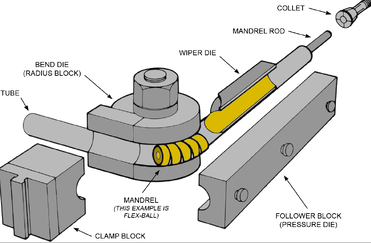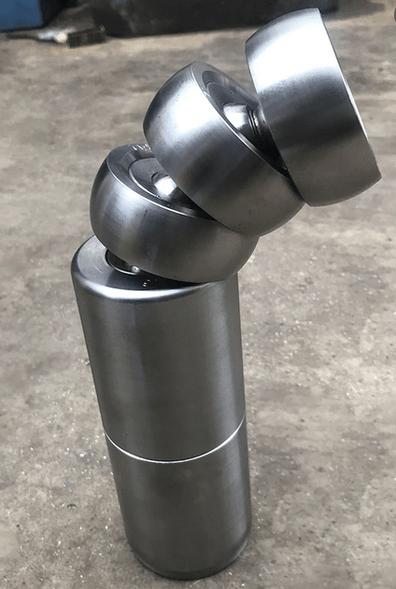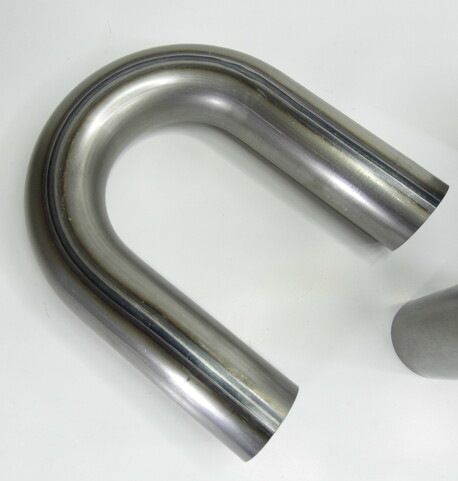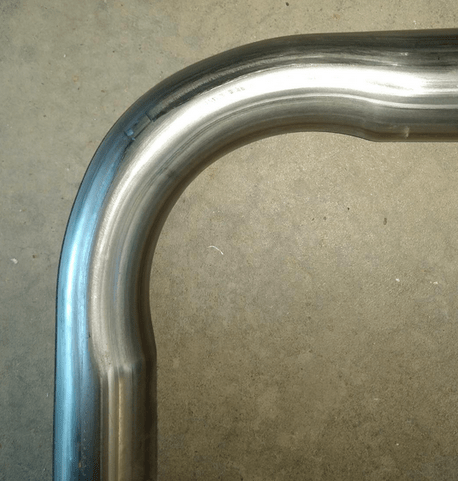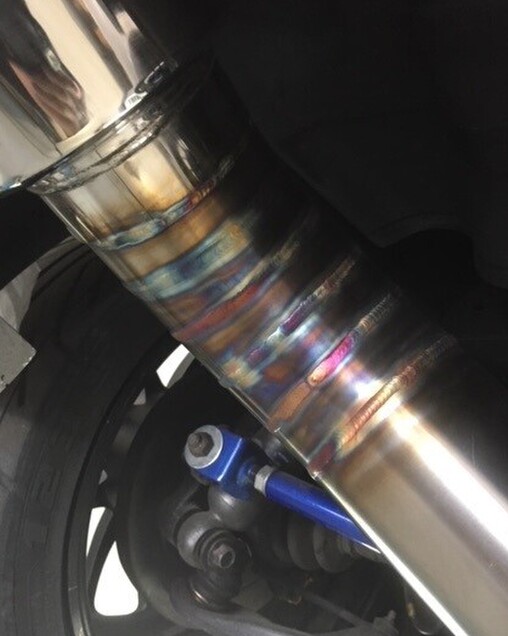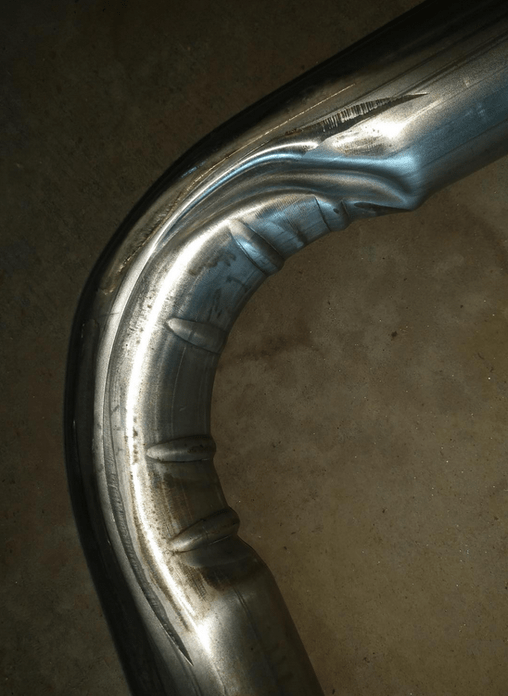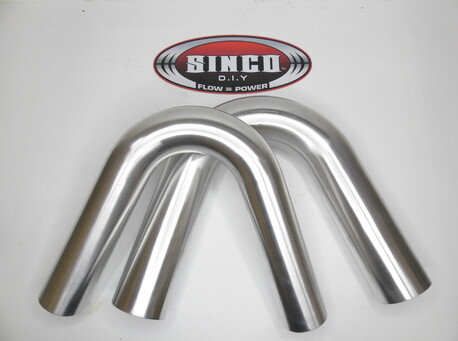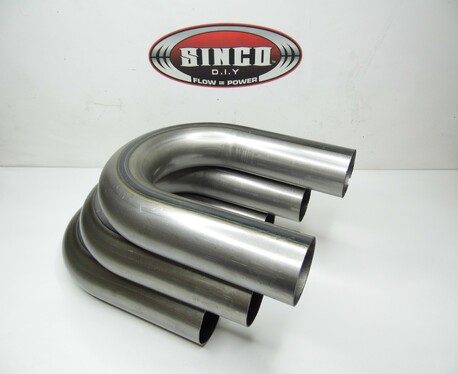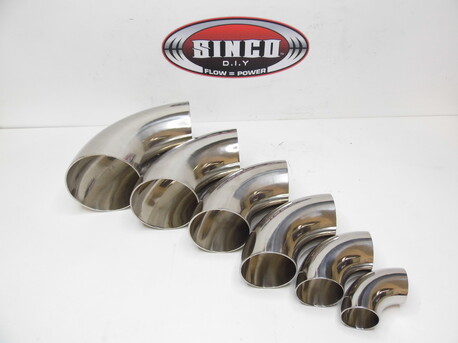Mandrel Bends
How Are Mandrel Bends Made
How Are Mandrel Bends Made??
Mandrel bending is a method of rotary draw bending, a solid mandrel shaft with up to five segmented shaped balls are inserted up the inside of the tube that is being bent. These mandrel are slightly smaller than the inside diameter of the tube and provide internal support during bending. Fitting a mandrel inside of the tube prevents damage such as distortion, collapsing, rippling, and flattening.
This type of pipe bending is useful for tight and large radius bends, high accuracy and repeatability with minimal deformation.
Mandrel bending can save costs when compared to cutting and welding because it reduces fabrication hours, consumables & materials.
The cost of a mandrel bending machine is very high ($150 000+) so is not something that would be purchased for the home hobbyist looking to fabricate an exhaust system in the shed at home, instead this is where pre-bent mandrel bends can be purchased and these can be cut and welded to the correct angles required.
What Are Mandrel Bends??
Mandrel bends are sections of straight tube that have been bent in a mandrel bending machine to different angles. The typical angles available are 15 degree, 30 degree, 45 degree, 90 degree, 135 degree & 180 degree.
These angles are an "off the shelve" type purchase, but custom angles can be bent if the shop owner allows this type of work. If it is a one off type bend the cost can be very high and sometimes not worth the cost. This is because the setup time for the machine has to be charged for the x1 bend, but if the machine is bending runs of say x50 then the setup cost is spread out into the x50 bends.
This is where the pre-bent angles can work out very cost effective, as these are generally bent in mass production to bring the cost down.
Mandrel Bend Vs Pie Cuts
Mandrel Bend vs Pie Cut
While pie cuts to some people look the part and when welded correctly can show off extreme skill of the fabricator, the cost and flow of a pie cut bend is questionable.
When factoring in welding gas, consumables for welding, labour and the cost of the pie cut segments themselves a pie cut elbow can be easily reach 3 times the price as a mandrel bent elbow.
A mandrel bent elbow has a smooth and consistent bend over the length of it, while the pie cut is made from a series of straight tube segments cut at set angles to make up the desired elbow angle. Each join has a weld and can effect the smooth flow of the exhaust gases by creating turbulence when the gases run over each join.
Mandrel Bend vs Crush Bend
Mandrel Bend vs Crush Bend
This is an extreme example of a crush bend, this will happen when you bend a piece of tube without any internal support to keep the tube round when pressure is applied.
You can clearly see that the flow will be effected by the crushing of the tube. The dents and crushing will create turbulence when the gases pass through the elbow which in turn will decrease the flow and effect the overall performance if used on a exhaust.
Do Mandrel Bent Exhausts Make a Difference??
Yes a mandrel bent exhaust will make a difference not only cosmetically, but also the volume/flow that it will pass. The bends generally do cost more than a press bend or crush bend.
When you are investing money into your vehicle and pushing for more power a mandrel bent exhaust system is a must have!!
A mandrel bend will allow more volume /exhaust gas to flow through the elbow which in turn will allow for more power.
How To Cut Mandrel Bends
Hand Grinder
An angle grinder can be used to cut mandrel bends, if you do this daily when working with mandrel bends you can eye it up and get the cut very straight and true, if this is not something you do all the time then there are a few tricks that can do used to help get your cut straight.
Bandsaw - Vertical
The picture here says a thousand words, the vertical band so is a simple and accurate way to cut your mandrel bends, depending on the hp rating on your motor and the blade thickness the bandsaws can struggle with harder materials such as stainless steel mandrel bends. Pictured here is an aluminum mandrel bend, this is a soft material so is a easy cut for this bandsaw.
Care must be taken with the vertical bandsaw when cutting as generally you will need to hold the mandrel bends by hand and push them through the saw by hand
Bandsaw - Horizontal
The horizontal bandsaw is another simple way to cut mandrel bends, this way is safer than the vertical bandsaw as generally you will be able to clamp up you mandrel bends in the vice that is needed to hold the parts you are cutting.
Depending on the angle that you are cutting and how much material there is on the mandrel bend, sometimes you will need to tack on extra lengths to be able to hold your material correctly so the vice will not slip.
There are also specific soft jaws that are available to purchase that are shaped to different radius mandrel bends. This give you a much tighter grip without any chance of crushing the bends from over tightening them in the vice.
